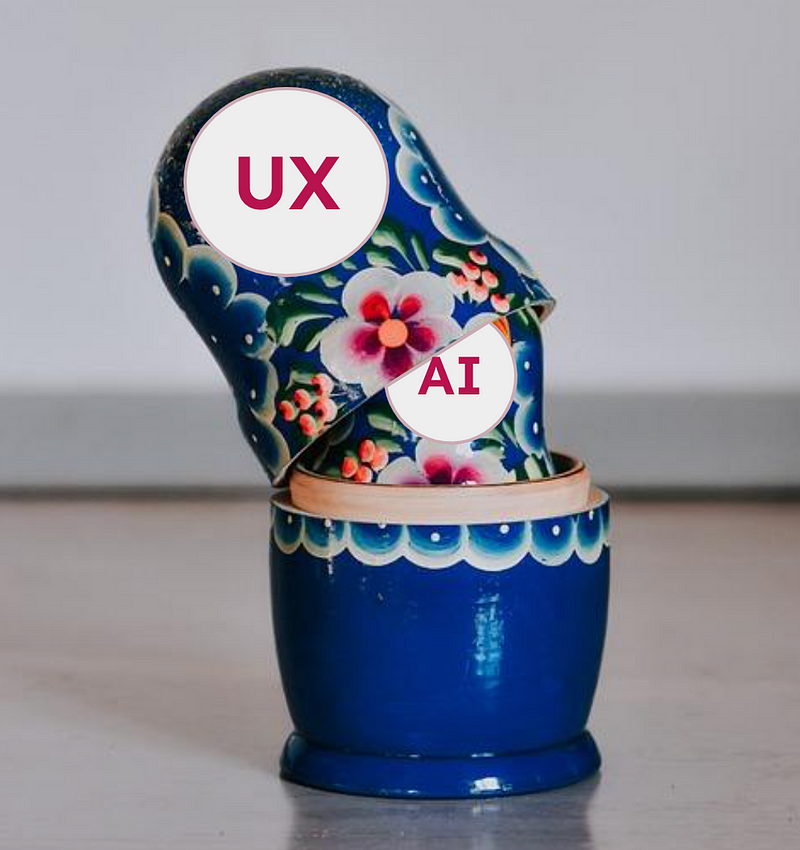Data-Driven Leadership and Careers
What’s Different About Today’s AI?
Hint: today’s AI revolution isn’t really about AI… it’s about UX
Long before the generative AI art apps and chatbots splashed their way onto the tech scene, artificial intelligence was powering your online experiences and optimizing many of the businesses you enjoy offline. AI was everywhere, but it was hidden in plain sight as a subtle, unobtrusive component in software applications. If you didn’t know how to look for the signs, it was easy to miss them. The subtlety was built-in — on purpose! — by user experience (UX) designers following a very intentional strategy.
AI was traditionally a subtle, unobtrusive component in software applications.
It all stemmed from a pervasive product philosophy of seamlessness. User experience (UX) designers of the previous decade worked very hard to create an online experience where good things simply happen and you, the user, needn’t be bothered with details about what’s going on behind the scenes. To them, having a nontechnical user notice the AI component would be as embarrassing as drawing that user’s attention to issues of JavaScript versus HTML. Don’t know what those are even though you spend much of your life online? Exactly. As a user, you don’t need to know about that. Everything just works. The AI components were designed with that same philosophy in mind.
Last decade’s user experience (UX) design philosophy for AI prioritized seamless, reliable solutions with minimal user tinkering.

What’s happening today is a radical pivot in product philosophy; suddenly, the user is encouraged to interact directly with an AI component that’s designed for usefulness rather than seamless correctness.
That’s right. Behind the scenes, UX designers are permitting themselves to serve you an unprecedented user interaction: an AI system that’s allowed to serve garbage… as long as it’s useful garbage.
Behind the scenes, UX designers are permitting themselves to serve you an unprecedented user interaction: an AI system that’s allowed to serve garbage… as long as it’s useful garbage.
Today’s “AI” revolution is more of a UX revolution than an AI revolution. Many writers are correctly observing that GPT (the core tech) models were available several years before ChatGPT (the interface that let non-programmers interact with the core tech easily), hence today’s crescendo is about users… but there’s more to it than that. It’s about more than user interfaces. It’s about user expectations.
What kicked off the UX shift? Public tools for generating AI art, since art is in the eye of the beholder and that conversation was already more about usefulness rather than correctness (tee hee “is that a hand with 7 fingers looool” but also “maybe that’s cool enough to use in my blog post” after rerunning your prompt a few dozen times, that is). Then ChatGPT leveled things up by offering the same incorrect-but-useful experience to the nontechnical public in what has been the most popular user interaction for decades: text-in-text-out. The result is a massive reset in user expectations about what “quality” means for AI output.
That’s why lately the emphasis is shifting away from delivering the most correct answer and towards delivering the most useful answer.
This is a massive reset in user expectations about what “quality” means for AI output.
Teaching millions of users to alter their expectations paves the way for all the other players to pitch new interactions that would have been a no-no a decade ago. (Though user expectations don’t change overnight and some of the existing players will struggle if they’ve built up too much of a “gets it right first time” brand. I won’t name names. Ahem.)
That’s what the new wave of AI is all about. User expectations. The AI capabilities revolution has been going for a few years now and the public hardly batted an eyelid. No, the last few months weren’t about AI capabilities. Once you take user expectations as your starting point for analysis, so much of the ecosystem will make instant sense. It’s a design revolution and it’s just getting started.
We’ll continue our journey through time in Part 2, but to summarize the key point:
Today’s “AI” revolution is more of a UX revolution than an AI revolution.






